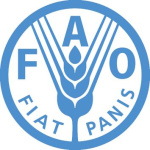- Industria: Agriculture
- Number of terms: 87409
- Number of blossaries: 0
- Company Profile:
Established in October 1945 with the objective of eliminating hunger and improving nutrition and standards of living by increasing agricultural productivity, FAO coordinates the efforts of governments and technical agencies in programs for developing agriculture, forestry, fisheries, and land and ...
In chromosomes, all of the proteins except the histones.
Industry:Biotechnology
In eukaryotes, structural genes are typically divided up (split) by a number of non-coding regions called introns. <i>cf</i> exon; guide sequence; splicing.
Industry:Biotechnology
In eukaryotes, transposable elements which control the activity of standard genes. A controlling element may, in the simplest case, inhibit the activity of a gene through becoming integrated in, or close to, that gene. Occasionally, either in germinal or somatic tissue, it may be excised from this site, and due to excision the activity of the gene is more or less restored, while the element may become reintegrated elsewhere in the genome where it may affect the activity of another gene. For example, in maize, a controlling element such as <i>Ac</i> or <i>Ds</i> is capable of influencing the expression of a nearby gene.
Industry:Biotechnology
In female animals, the products of a meiotic division that do not develop into an ovum. The first polar body comprises one of the two products of meiosis I, and it may not go through meiosis II. The second polar body comprises one of the two products of meiosis II.
Industry:Biotechnology
In fungi, a tetrad of spores that contains four different types; e.g., <i>AB, aB, Ab</i> and <i>ab.</i>
Industry:Biotechnology
In fungi, a tetrad that contains two kinds of meiotic products (spores), e.g., 2AB and 2ab.
Industry:Biotechnology
In genetic engineering experiments, it is often necessary to transform with a plasmid for which there is no selectable phenotype and then screen for the presence of that plasmid within the host cell. Co-transformation is a technique in which host cells are incubated with two types of plasmid, one of which is selectable and the other not. Cells which have been transformed with the first plasmid are then selected. If transformation has been carried out at high DNA concentration, then it is probable that these cells will also have been transformed with the second (non-selectable) plasmid. The technique is frequently used in experiments with mammalian cells.
Industry:Biotechnology
In genetic studies, the mating of two individuals or populations. Also called mating.
Industry:Biotechnology
In genetics, typically an individual that has one recessive mutant allele for some defective condition that is "masked" by a dominant normal allele at the same locus, i.e., an individual that is heterozygous for a recessive harmful allele and a dominant normal allele; the phenotype is normal, but the individual passes the defective (recessive) allele to half of its offspring.
Industry:Biotechnology
In immunology, any of many soluble molecules that cells produce to control reactions between other cells.
Industry:Biotechnology
